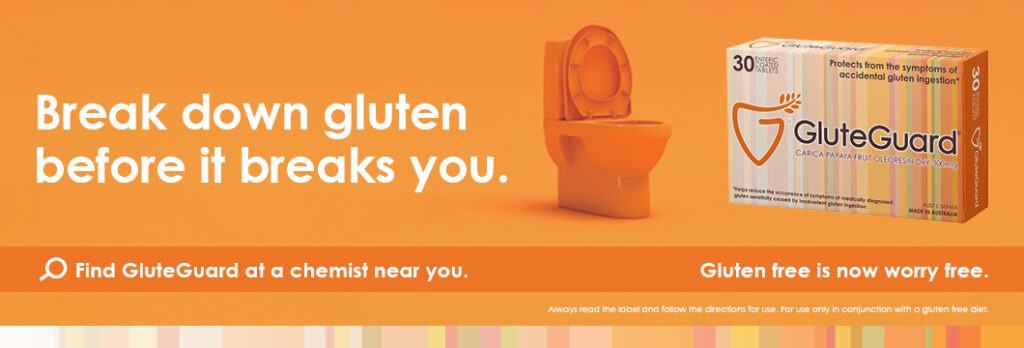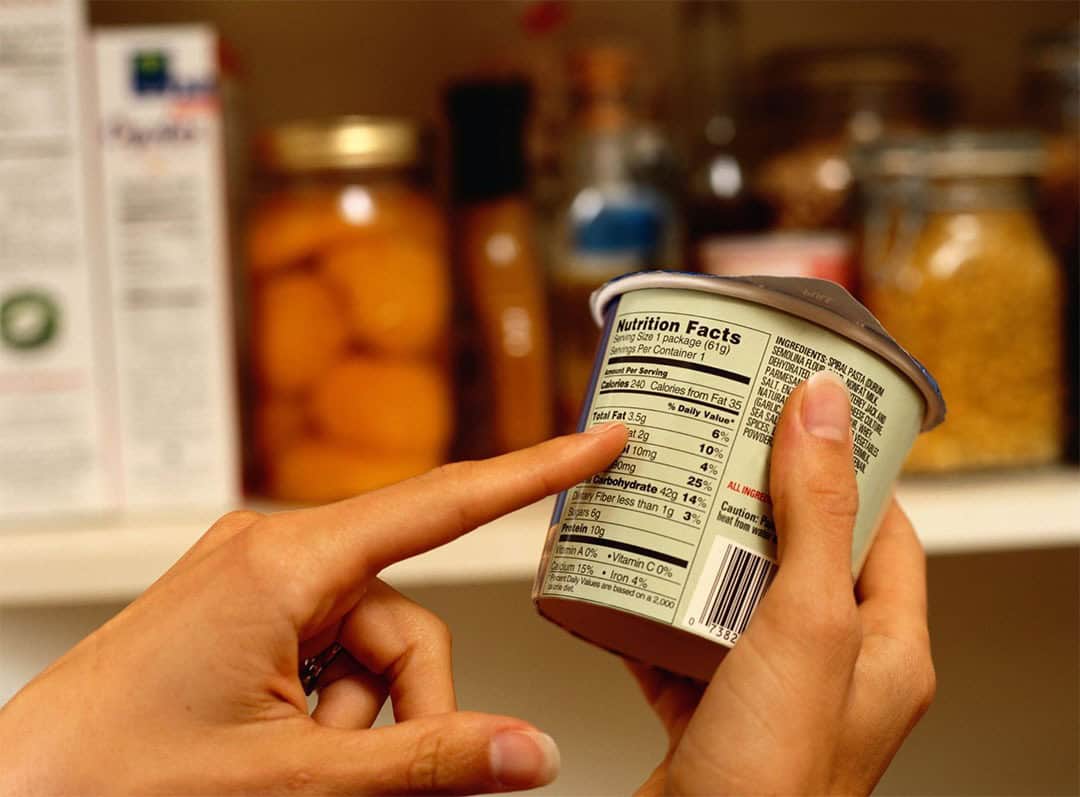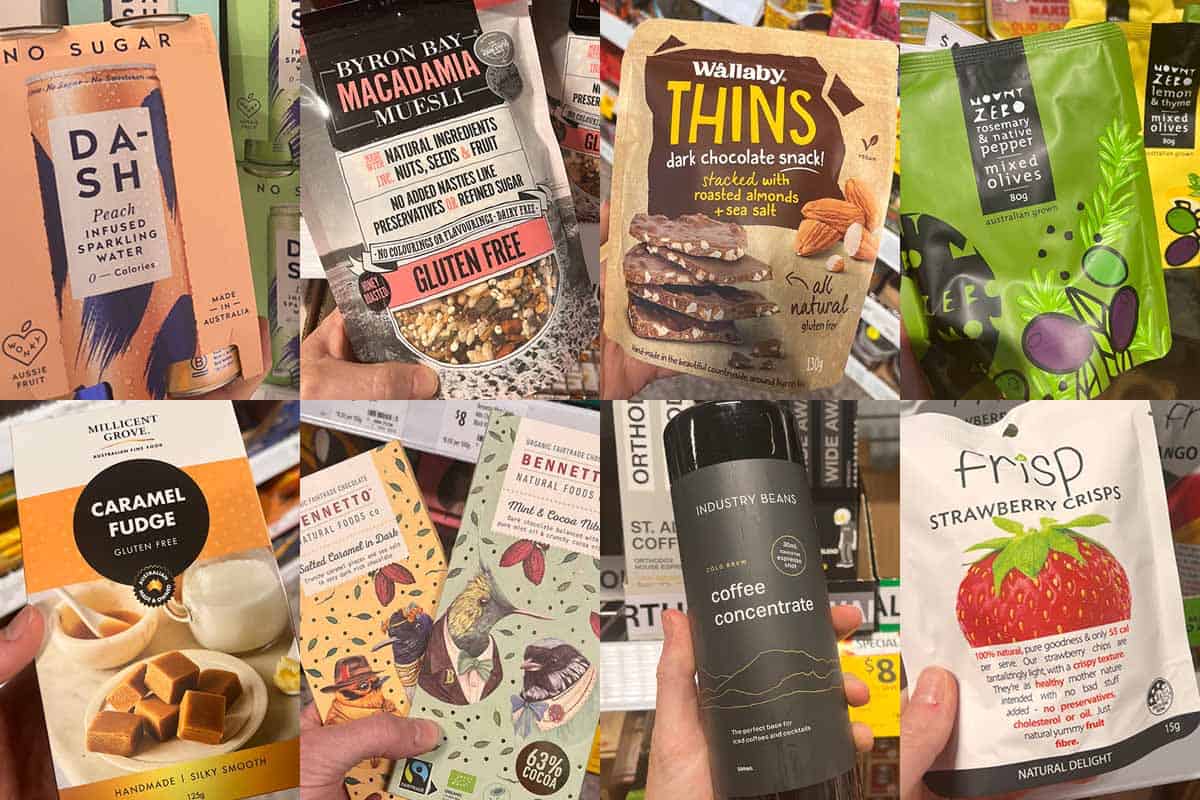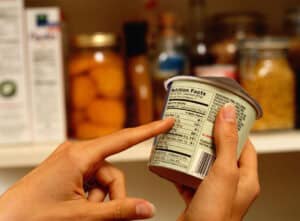If you’re new to a gluten free diet, you’ve probably noticed that food labels can be somewhat puzzling – particularly challenging when accurate reading is essential for finding suitable gluten free products.
Before we jump into how to read these labels, it’s essential to understand the different parts of a food label, what needs to be declared, what is regulated or not, and why it matters. Our blog, ‘A Guide to Understanding Labels For The Gluten Free Diet,’ is the perfect starting point. It simplifies everything you need to know with the expertise of Advanced Accredited Practicing Dietitian, Dr. Kim-Faulker-Hogg, who guided us through the latest labelling requirements.
While it’s not mandatory to read to follow along these steps effectively, doing so will sure help you make sense of what to look out for, so you can make informed choices suitable for your gluten free lifestyle.

How to Check a Food Label for Gluten in 3 Steps
Step 1. Determine if the product is declared gluten free.
Check the packet for a gluten free trademark or a gluten free claim, and the nutritional panel for nil detectable gluten. If so, you’re good to go!
The claim gluten free on packaging overrides the product ingredient list, and there should be no concerns regarding uncertain ingredients. Manufacturers can only claim gluten free status if the food has no detectable gluten.
Step 2. If there is no gluten free claim, determine if the product is still gluten free by ingredient.
To do this check the CONTAINS STATEMENT:
- If the contains statement does not mention Gluten or Wheat, this product is gluten free by ingredient.
- If the contains statement does mention Gluten, step away. This product is not gluten free by ingredient.
- If the contains statement mentions Wheat but not Gluten, don’t quite put this one back on the shelf yet. This isn’t a trick question even though it might seem like one! Remember, when only wheat is declared (in the absence of gluten) this indicates that the product contains a wheat derived ingredient, but that the wheat derived ingredient does NOT contain any DETECTABLE GLUTEN.
Wheat Derived Ingredients That Are Suitable for a Gluten Free Diet
Below are examples of ingredients that are wheat derived but have no detectable gluten as they undergo extensive processing which removes gluten proteins, rendering them suitable for a gluten free diet:
- Glucose syrup (wheat)
- Caramel Colour (150) from wheat
- Dextrose from wheat
- Fructose (wheat)
- Maltose (wheat)
- Sorbitol (wheat)
- Maltitol 965 (wheat)
- Gluconodelta-lactone 575 (wheat)
- Glutamate based flavours 620-625 (wheat)
Step 3. If the product is gluten free by ingredient, the next step is to assess the gluten cross contact risk.
To do this, check the MAY CONTAINS STATEMENT:
- If the may contain statement does not mention wheat, rye, barley, oats or gluten: This suggests the manufacturer is confident that no gluten containing grains come into contact with the ingredients used to make the product, and it is suitable for a gluten free diet.
- If the may contain statement does mention wheat, rye, barley, oats or gluten: The intention of this statement is for the food manufacturer to alert you to the possible unintended presence of gluten during the manufacturing process. While helpful to know this when accurate, the statement can be used unnecessarily as a blanket statement to reduce risk. Even when used appropriately a may contain statement doesn’t mean that there are any significant levels of gluten present. Cross contact occurs unintentionally and sporadically.
With a may contain statement it’s important to understand that there could be a risk, but it’s not possible to quantify the amount of unintentional cross contact, if any. It is a personal choice to eat these foods – more on this below.
- If there is no may contain statement at all: Remember this statement is voluntary and the food manufacturer can choose whether they wish to include these on their labels. In this case there is no information available to accurately assess the possible cross-contamination risk, gluten or otherwise. Some food manufacturers may choose:
- To not declare cross-contact risk at all,
- Or, have in fact checked the risk and none is present, so no statement is made. There currently is no icon or standard to add to the product that can tell the public this has been done and the product is safe.
To ‘May Contains’ or to Not ‘May Contains’
With possible gluten cross contamination, this decision is ultimately up to the individual and the level of risk they are comfortable with. Several factors can be considered in this situation such as:
- The medical risk as personalised to each individual.
- The individual’s sensitivity or risk of developing physical symptoms.
- How often and in what quantity the product is being consumed.
- Trust and knowledge in the food manufacturer and their process.
- The availability of a viable alternative that declares it does not contain gluten.
Consulting a Dietitian who specialises in the gluten free diet, or your Healthcare Professional is a great resource if you are unsure what is right for your circumstances.

Get Our Free 3-Step Guide Sent Straight To Your Inbox.
Sign up to our newsletter and instantly receive our PDF on how to read food labels for the gluten free diet.
When Uncertain, Find Peace of Mind with GluteGuard
We hope this helps demystify gluten free labelling and helps you confidently choose foods the next time you are searching through the supermarket aisles. In cases where labelling is uncertain, GluteGuard is helpful as an extra layer of protection to help protect against the symptoms of accidental gluten ingestion*. GluteGuard’s unique enzyme Caricain, naturally derived from the papaya skin, helps to break down gluten you don’t know about.
*GluteGuard helps protect those with medically diagnosed gluten sensitivity from symptoms of accidental gluten ingestion. Always read the label and follow the directions for use. For use in conjunction with a gluten free diet.












